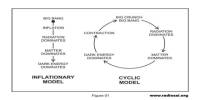According to Newton’s first law, unless pushed to alter its condition by the operation of an external force, every object will continue to be at rest or in uniform motion in a straight line. Unless driven to change its condition by an external force, every body remains in a state of rest or uniform motion in a straight line.
The foundation of this law is Galileo’s law of inertia. The definition of force and the fundamental feature of matter known as inertia are both covered by Newton’s first law of motion. Inertia is the quality of a body that prevents it from changing its condition on its own in the absence of outside action.
The inertia is of three types:
(i) Inertia of rest
(ii) Inertia of motion
(iii) Inertia of direction.
(i) Inertia of rest
It is the inability of the body to change its state of rest by itself.
Examples
(i) A person standing in a bus falls backward when the bus suddenly starts moving. This is because, the person who is initially at rest continues to be at rest even after the bus has started moving.
(ii) A book lying on the table will remain at rest, until it is moved by some external agencies.
(iii) When a carpet is beaten by a stick, the dust particles fall off vertically downwards once they are released and do not move along the carpet and fall off.
(ii) Inertia of motion
Inertia of motion is the inability of the body to change its state of motion by itself.
Examples
(a) When a passenger gets down from a moving bus, he falls down in the direction of the motion of the bus.
(b) A passenger sitting in a moving car falls forward, when the car stops suddenly.
(c) An athlete running in a race will continue to run even after reaching the finishing point.
(iii) Inertia of direction
It is the inability of the body to change its direction of motion by itself.
Examples
When a bus moving along a straight line takes a turn to the right, the passengers are thrown towards left. This is due to inertia which makes the passengers travel along the same straight line, even though the bus has turned towards the right.
This inability of a body to change by itself its state of rest or of uniform motion along a straight line or direction, is known as inertia. The inertia of a body is directly proportional to the mass of the body. From the first law, we infer that to change the state of rest or uniform motion, an external agency called, the force is required.
Force is defined as that which when acting on a body changes or tends to change the state of rest or of uniform motion of the body along a straight line.
A force is a push or pull upon an object, resulting the change of state of a body. Whenever there is an interaction between two objects, there is a force acting on each other. When the interaction ceases, the two objects no longer experience a force. Forces exist only as a result of an interaction.
There are two broad categories of forces between the objects, contact forces and non–contact forces resulting from action at a distance.
Contact forces are forces in which the two interacting objects are physically in contact with each other.
Tensional force, normal force, force due to air resistance, applied forces and frictional forces are examples of contact forces.
Action-at-a-distance forces (non- contact forces) are forces in which the two interacting objects are not in physical contact which each other, but are able to exert a push or pull despite the physical separation.
Gravitational force, electrical force and magnetic force are examples of non- contact forces.
















